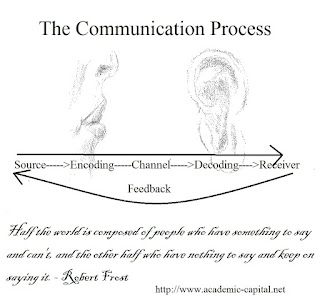Doing a Google search for Goleman’s statement on Emotional Intelligence resulted
in finding 2570 sites that had this quote exactly or a variation of it.
McCoy (1997) quoted Goleman as saying, “That
IQ contributes 20% to the factors that determine life success, which leaves 80%
to other forces, ranging from social class to luck.
People who cannot control their emotions fight
inner battles that sabotage their ability for focused work and clear thought”
(p. abstract) .
So, what controls the
80% of these other forces?
Kraus (2008)
states that “
Researchers have found evidence
that emotional intelligence as measured by the MSCEIT relates to the
personality constructs defined by the Big Five” (p. 4). Perhaps it is our personality and emotional
intelligence, eh?
McCoy (1997) shows that people often become enraged over trivial
events.
Goleman calls an
emotional hijacking where your emotions
take over the entire experience and make a
mountain
out of a molehill. Oftentimes real
estate decisions are made based on elements out one’s control, such as the
economy or the fiscal cliff.
Clients
turn to you for answers and may get emotional when considering these items that
are beyond their control, thus creating an emotional meltdown or an
emotional hijacking.
Kidwell, Hardesty, Murtha and Sheng (2011) discovered the EI definitely
relates to a positive performance with real estate agents.
Tasso (2009) discussed a sensitive trust that
related to emotional intelligence.
Much
like emotional intelligence, the ability to sell is not innate or
inherent.
A successful realtor truly
understands the needs of the client and the clients themselves.
Drucker (1973) stated, “The aim of marketing
is to make selling superfluous. The aim is to know and to understand the
customer so well that the product or service fits him/her and sells itself"
(Kotler, 1999).
Connect with this
knowledge and connect it with the importance of emotional
intelligence.
Mayer and Salovey (1997)
calls it, "The ability to perceive, integrate, understand and reflectively
manage one's own feelings and other people's feelings."
Research shows that there is connection between emotional intelligence and
performance.
In future writings, we will
delve into what the combination of emotional intelligence is the in the field
of real estate.
Author: Dr. Andree Swanson
References
Kidwell,
B., Hardesty, D. M., Murtha, B. R., & Sheng, S. (2011). Emotional
intelligence in marketing exchanges. Journal of Marketing, 75(1), 78.
Retrieved from http://search.proquest.com/docview/853271093?accountid=32521
Mayer, J., & Salovey, P. (1997).
What is emotional intelligence? In P. Salovey & D. Sluyter (Eds). Emotional
Development and Emotional Intelligence: Implications for Educators (pp. 3-31).
New York, NY: Basic Books.
McCoy,
B. H. (1997). Emotional intelligence provides key to life success. Real
Estate Issues, 22(1), 1-III. Retrieved from
http://search.proquest.com/docview/214010223?accountid=32521
Tasso,
K. (2009). A professional approach to selling. The Estates Gazette, 97-97.
Retrieved from http://search.proquest.com/docview/223770650?accountid=32521


